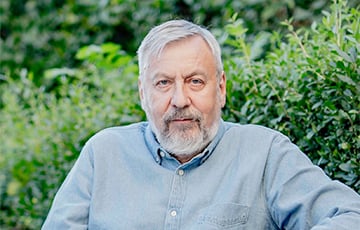The Simulacra
16- Iryna Khalip
- 8.06.2024, 17:04
- 30,020

Destroyed the country, saving a whatnot.
A search was recently carried out at my friends' place. KGB agents came, about eight of them. The fact that they showed up didn't surprise my friends: every Belarusian is expecting this to happen every day. I think that bags with a change of underwear and a toothbrush have long been in every Belarusian apartment. What surprised my friends was something completely different.
“They didn't look like KGB agents at all!” my friend was surprised. “Young guys, no more than 25-30 years old, in branded clothes, with a certain stylish casualness, with well-groomed beards — as if they had just come out of a barbershop. Natural hipsters. If I had seen them somewhere in a cafe, I would have thought they were some IT guys.”
I understand the surprise perfectly: we are used to the fact that a KGB agent wears polyester trousers with creases and pointed shoes, and every passerby on the street certainly notes: oh, look, there’s a KGB agent. But they want to look like ordinary people, and they dress up in stylish clothes and go to barbershops. But this is not so much an attempt to mimic and blend in with the crowd. They really want to outwardly become something that they are not. This is called a simulacrum — a copy without an original, an image without content.
These KGB agents reminded me of the story about the poet Yesenin. When he came to Moscow, those around him refused to recognize him as a villager for a long time, because Yesenin wore a kosovorotka. And in those days in Russia, the first thing a villager did when he found himself in a big city was buy a city suit. A villager could not walk around Moscow or Petrograd in a kosovorotka. By the way, they didn't wear them in the village either, and if the poet had come to his native Konstantinovo dressed like that, he would have been laughed at. So Yesenin's kosovorotka is a pure simulacrum.
And in modern Belarus, everyone has become a simulacrum. The “Chamber” tries to look like a parliament and pretends to work on legislative acts. Judges put on sweaty robes and pretend to be priests of justice, uttering phrases like “in the name of the Republic of Belarus.” The military pretends to be true to the oath, mentally cursing the oath, the army, and the self-appointed commander-in-chief. Teachers pretend to teach, and not just ensure that students attend patriotic events. Propagandists try to look like journalists and also go to barbers, but this can't convince anyone either.
And the biggest simulacrum of Belarus is, of course, Lukashenka. Now they are trying to make an image out of him called “the father of nation”: tolerant, experienced, thrifty. Here from the archives of seven years ago they are digging up a story where Lukashenka in an abandoned village takes out a whatnot from a house abandoned by the residents. Seven years have passed, and for the creation of a simulacrum that story suddenly came in handy. Of course, there is no reason to recall it, but they came up with the old story. They say, remember the bookcase that Ryhorych saved from a radioactive village? Well, it was restored, and now it decorates the residence. As part of the creation of the simulacrum, various similar stories with daily stories on state television should continue to occur. Lukashenka should thoughtfully walk down the street, pick up a cigarette butt or a piece of paper and, reproachfully shaking his head, carry it to the nearest trash can. Or approach a girl on the street whose heel is broken, take a hammer with nails from his pocket and immediately hammer it back. Or sneak up on a fisherman at dawn, snatch his fishing rod and say: “Is this how you fish? Look at me, this is how it should be done. Learn while I'm alive!”
The thing is that the previous attempt to create a simulacrum failed. Then, in the autumn of 2020, they tried to create an image of a winner out of Lukashenka. He dressed in camouflage, flew a helicopter over the heads of Belarusians and looked vigilantly through field binoculars, ran with a machine gun behind the backs of riot policemen, bravely entered the territory of a plant in a crowd of thug security guards dressed in black suits, broadcast supposedly intercepted telephone conversations of enemy special services, where he was called a “tough nut to crack”. But the people laughed so hard they fell off their chairs. The repressions had already begun, and the first murders, and torture at the Akrestsin Street detention center, and the arrests of Statkevich and Tsikhanouski, and it was clear that things would get even worse, but it was impossible to stop and not laugh at this machine gun, binoculars and tough nut. Lukashenka, even against the backdrop of the ongoing chaos, looked so caricatured that they decided to urgently change the image. Then the war came, and there was a chance to cling to the simulacrum of a peacemaker-reconciler, but it did not work. And now we are witnessing the last attempt to create something out of Lukashenka. At least some decent image. You can't bring him to the barbershop, you can't put a kosovorotka on him (although there was once a ridiculous attempt with a button accordion), he won't fit into jeans. What remains are whatnots, cigarette butts and fishing rods. But no one will believe even in this pensioner's thrift. Because it's a simulacrum. A copy without an original. However, they are all simulacra.
Iryna Khalip, exclusively for Charter97.org











